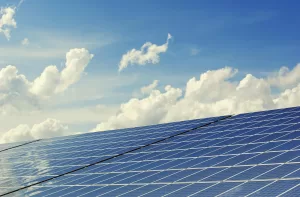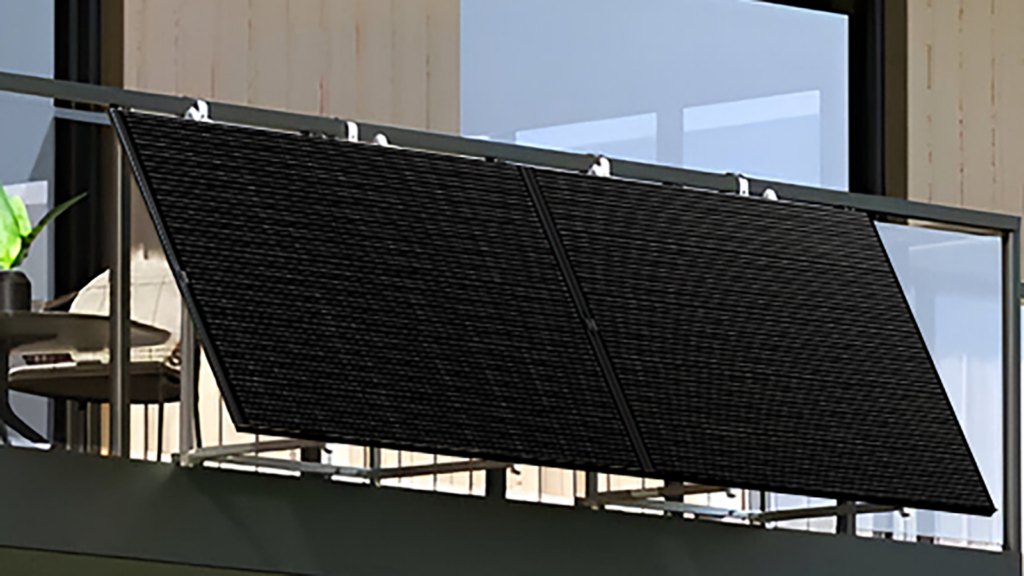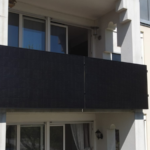As the demand for renewable energy solutions continues to rise, especially in urban areas, balcony solar systems have emerged as an innovative and practical option for generating electricity in limited spaces. These compact photovoltaic (PV) systems are designed to be easily installed on apartment balconies, offering a sustainable way for city dwellers to reduce their energy bills and carbon footprint. In this article, we will explore how a balcony solar system works, from the basic components to the benefits and considerations of using such a system.
Understanding the Components of a Balcony Solar System
A balcony solar system include:
- Solar Panels: Small, lightweight panels that capture sunlight and convert it into direct current (DC) electricity.
- Inverter: Converts DC electricity into alternating current (AC) for use in your home.
- Mounting System: Secures the panels to your balcony, optimizing their angle for sunlight exposure.
- Battery Storage (Optional): Stores excess energy for use during non-sunny hours.
- Monitoring System: Tracks energy production and consumption in real-time.
How a Balcony Solar Power Station Works?
Balcony solar systems harness sunlight to generate electricity through a series of straightforward steps:
Solar Panel Absorption: Solar panels on the balcony capture sunlight using silicon-based photovoltaic cells. When sunlight hits these cells, it initiates the photovoltaic effect.
Photovoltaic Effect: The solar panels contain semiconductor materials (typically silicon) that generate direct current (DC) electricity when sunlight causes electrons to move.
DC Electricity Generation: The panels produce DC electricity as long as they are exposed to sunlight. The amount of electricity depends on factors like panel size, angle, and sunlight intensity.
Inverter Conversion: An inverter converts the DC electricity into alternating current (AC), which is compatible with household appliances and electrical systems.
Integration with Home System: The AC electricity is then integrated into your home’s electrical system, powering lights, appliances, and other devices.
Handling Excess Energy: If the system generates more electricity than needed, excess energy can either be:
- Net Meters: Sent back to the grid, earning credits or compensation.
- Battery Storage:Stored in batteries for later use, ensuring a steady power supply even when the sun isn’t shining.

Germany’s New Balcony Solar System Regulations
As of mid-May 2024, Germany has updated regulations for balcony solar systems. The new standard allows a maximum of 800 watts to be fed into the grid, up from 600 watts. The total installed capacity is limited to 2000 watts, with inverters reducing output if it exceeds 800 watts. This change aims to enhance solar power use from balconies and simplify installations.
Systems can save up to 180 euros annually based on current electricity rates, with costs for an 800-watt system ranging from 300 to 700 euros. Financial incentives between 50 and 500 euros are available in various German states, and VAT on mini-solar systems has been removed since 2023. However, feed-in tariffs apply only to larger systems.
Conclusion
A balcony solar system offers a practical and eco-friendly solution for generating electricity in urban environments where space is at a premium. It provides a way to reduce energy costs, lower your carbon footprint, and gain a degree of energy independence. However, it’s important to consider the specific conditions of your living situation, including the amount of sunlight your balcony receives, the available space for installation, and any legal or regulatory restrictions.
Maysun’s balcony solar power stations excel with their plug-and-play design and high-end microinverters for each panel, unlike the common one-to-two inverter systems. This setup improves reliability by isolating inverter failures and maintains optimal efficiency. The lightweight design also enhances installation flexibility, offering a more efficient and dependable solution for urban spaces.For more information or to discuss how our solutions can fit your needs, please contact us for a consultation.
Reference:
Gieße, A. (2024, August 28). Jetzt bis 800 Watt Leistung erlaubt: 2024 ein Balkonkraftwerk kaufen? https://www.adac.de/rund-ums-haus/energie/versorgung/balkonkraftwerk/
How does a balcony solar system work? – RAJA. (2023b, November 14). https://www.rajaev.com/news/how-does-a-balcony-solar-system-work.html
You may also like:

Which solar modules perform better under high summer temperatures?
Can high summer temperatures reduce the power generation efficiency of solar modules? This article compares the performance of HJT, TOPCon, and IBC modules under high temperatures to help you make informed choices and optimize your return on investment.

Structural Risks and Component Adaptation Strategies for Commercial PV Deployment under Extreme Weather Conditions
A comprehensive analysis of the structural risks and component configuration strategies for commercial and industrial PV systems under extreme weather conditions, helping businesses enhance system stability and long-term energy yield.

How Can Photovoltaics Help Businesses Cut Peak Electricity Costs During Summer Price Spikes?
How Can Businesses Use Photovoltaic Systems to Address Summer Electricity Price Peaks? This article provides cost-saving calculations, suitability conditions, and technical selection recommendations.

How to Detect Hotspots and PID Effects in PV Modules to Prevent Long-Term Losses?
How to identify and respond to hotspots and PID effects in PV modules? This article focuses on the European market, combining detection technologies, real-world cases, and protection strategies to provide developers and investors with reliable loss warnings and yield protection solutions.

How to Choose the Most Suitable Solar Panels for Commercial and Industrial Use in 2025
How can commercial and industrial projects choose the right solar panels in 2025?
This article provides a systematic comparison of mainstream panel types such as TOPCon, HJT, and IBC, analyzing their advantages, disadvantages, and suitable applications. It aims to help businesses make accurate selections based on specific project conditions, thereby improving long-term energy output and return on investment.

After the Iberian Blackout How Can Enterprises Reshape Their Energy Security Systems
The 2025 Iberian blackout drew widespread attention across Europe. This article analyzes grid vulnerability, enterprise energy risks, and the deployment path of “solar + storage + EMS” systems to help businesses build a controllable and secure energy structure.



